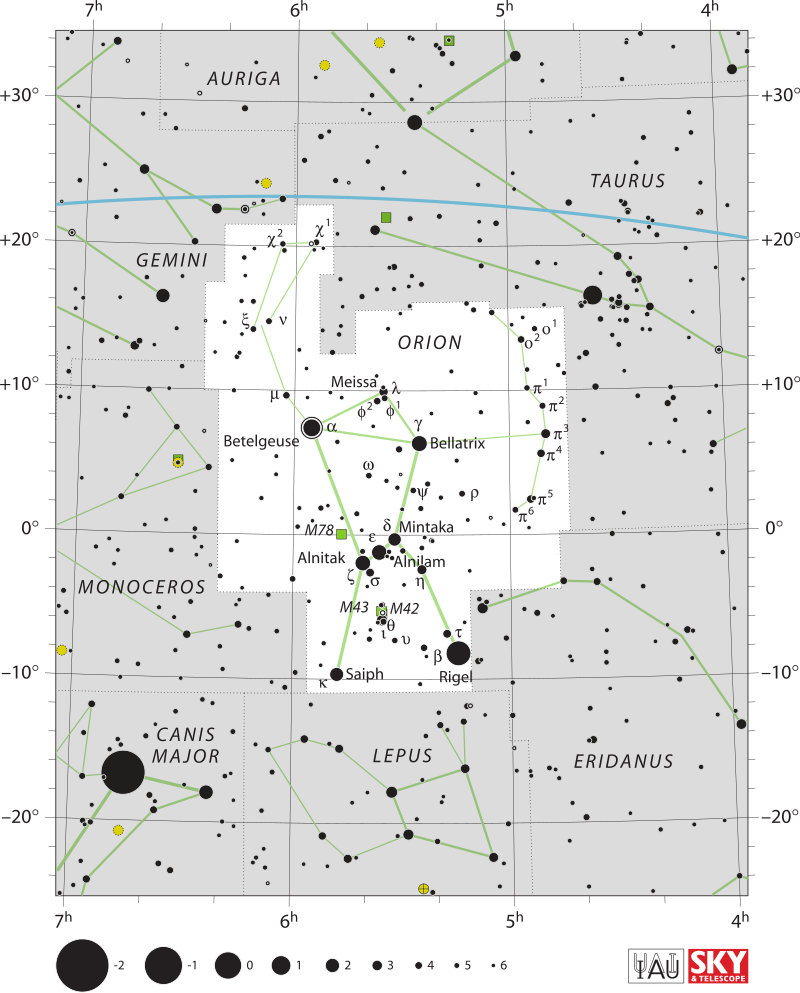A look at the history and legends behind the most dominant constellation in the night sky.
Orion
The most prolific and iconic constellation in the night sky, Orion, is placed on the celestial equator. Making it visible to both people in the northern and southern hemispheres.

The trademark belt comprised of Alnitak, Alnilam, and Mintaka are frequently the most visible parts of the constellation. The closest star being 1,200 light years away.

In the star chart, you can see the stars and their names. Starting with another famous star, Betelgeuse. Betelgeuse is a red supergiant of type M1-2 and is one of the largest stars visible to the naked eye. Bellatrix is next. The lower right has Rigel and the lower left has Saiph. Rigel and Betelgeuse are the brightest stars in this constellation.
Cultural History
As with almost every constellation, other cultures identify and characterize this constellation differently. For example, in the Middle East, Orion was known as “the giant”. Saiph is named from the Arabic, saif al-jabbar meaning “sword of the giant.”
In Ancient Egypt the stars of this constellation were considered a god named Sah. In Hungarian tradition, Orion is known as Archer, or Reaper. Whereas the Scandinavians traditions held Orion’s belt as Frigg’s distaff or Freyja’s distaff.
There is a plethora of other mythology associated with this beautiful constellation. Imagine for a moment how different of a view this constellation must have been a thousand years ago. A time when there was not any light pollution and one could see the sky just a blaze with starlight on a clear night. What it must have been like to just look up at the ancient sky and be able to take in all of its glorious display.
Alas, that time is long since gone and 80% of the sky is polluted with light. But yet a man can dream.



